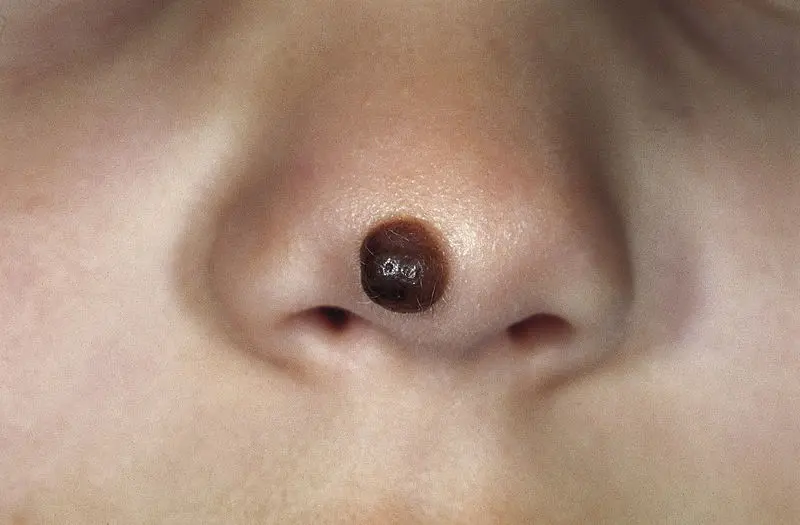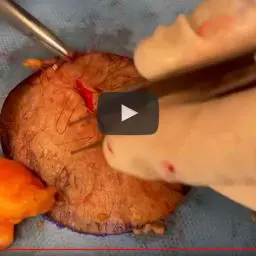Congenital Nevus
Skin Conditions
Congenital is a word that means “present from birth” while a nevus is the medical term for a mole. Therefore, a congenital nevus is a mole that was present on the body from birth. This distinguishes a congenital nevus from a regular mole – most moles appear after birth and are related to sun exposure.
Nevi are composed of a type of cell known as melanocytes which produce melanin, a pigment that helps protect the skin from damaging UV radiation found in sunlight. Melanin is the compound that is largely responsible for skin tone. In fact, it is increased melanin production by melanocytes (in response to UV damage) that causes a tan to form after sun exposure. Congenital nevi are much rarer than normal moles – only about one in every hundred persons will be born with a nevus. These birthmarks are caused when melanocytes abnormally proliferate in the developing fetus leading to the development of this darkened bump on the skin. Melanocytes are normally found in a single layer at the junction between the epidermis (the most superficial layer of the skin) and the dermis (the deeper layer of the skin). Nevi are formed when melanocytes proliferate and form a clump. These multiple layers may even extend deeper into the dermis.
The vast majority of congenital nevi are small (less than one and a half centimeters or slightly smaller than a dime) but can rarely reach gargantuan proportions and can cover an entire arm or leg. Fortunately, congenital nevi are by and large asymptomatic meaning that they do not cause any problems for the people that have them. There is, however, one major exception: having a congenital mole increases risk for developing melanoma – a very aggressive and deadly form of cancer. The risk of developing melanoma increases with the size of the congenital nevus, especially in conjunction with other risk factors such as sun exposure and features such as fair skin, eyes, and hair. However, most congenital nevi do not give rise to melanoma. Due to this increased risk of malignancy many congenital nevi are removed shortly after birth, especially if large. Congenital nevi may become inflamed and irritated if they catch on clothing or jewelry. They lack normal sweat and sebaceous glands found in the skin and are therefore more prone to drying out which can lead to itching. Congenital nevi may change in appearance over time. The normal progression of nevus maturation is as follows: as the nevus ages the melanocytes that compose it slowly move deeper into the dermis, eventually having no contact with normal melanocytes at the junction of the dermis and epidermis.
As they move deeper these cells take on an elongated or “spindle” appearance when observed under the microscope. The bet result of these changes is a progressive flattening and lightening of the mole. These changes typically take place over about 30 years. Some nevi may even disappear completely! However, there are changes to a nevus that should raise suspicion for a more sinister process. In fact, if any change in shape, color, or size of a nevus is noticed you should make a dermatologist immediately for evaluation. These changes occur over the course of weeks or months as opposed to the slower changes that normally take place. If you have a congenital nevus it is very important to monitor your moles for rapid changes and to have regularly scheduled dermatology appointments. This is especially important because, while melanoma can be rapidly fatal, if caught early in its development a complete cure with no long-term effects can easily be performed. Schedule an appointment with your dermatologist if you have concerns relating to congenital moles or melanoma.






























